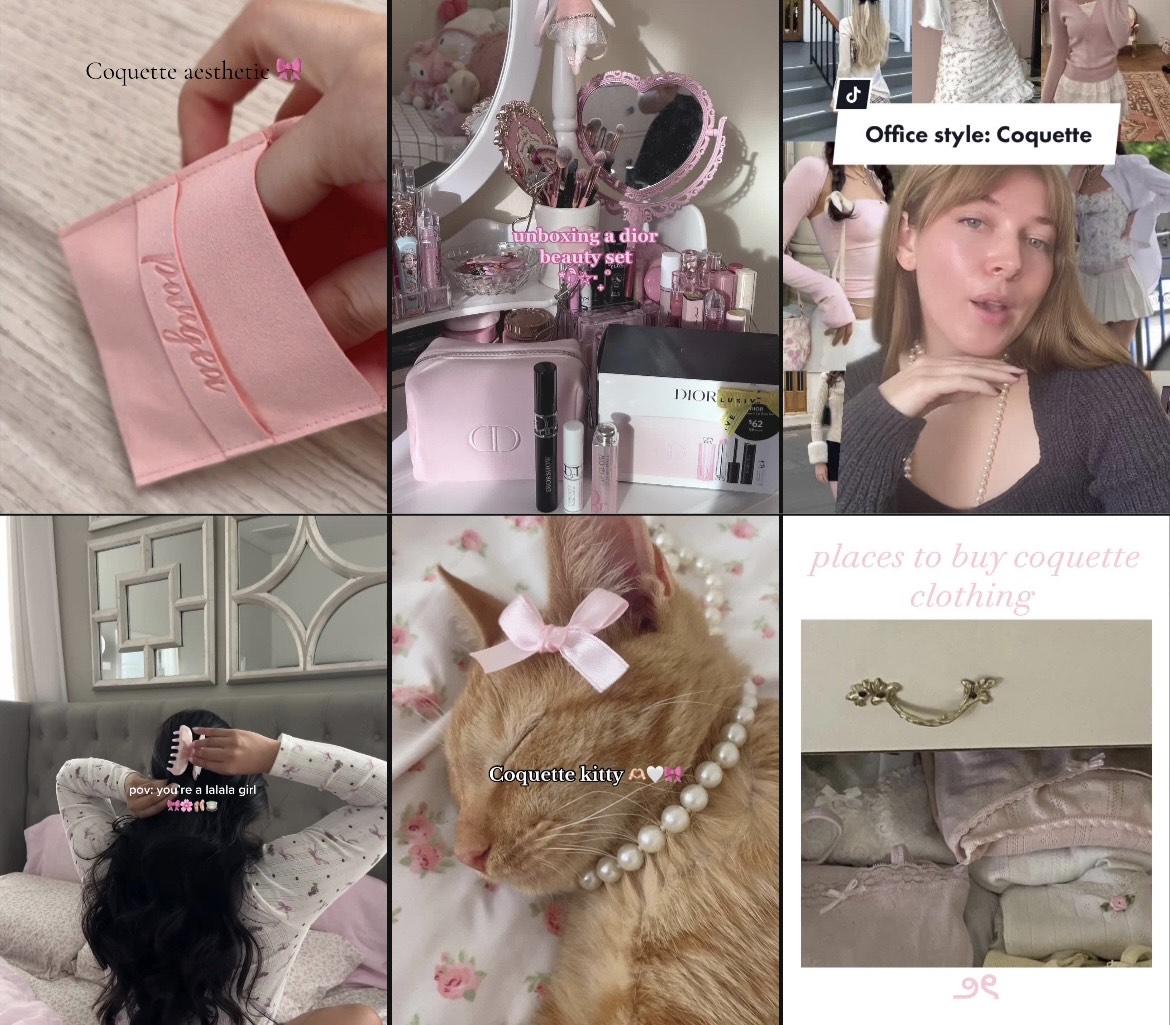Collage of “Coquette Aesthetic” Tiktoks The Xavierite
Since the late 2000s and early 2010s there has been a rise in “aesthetics”, which resemble subcultures in the way that they’re often characterized by a combination of fashion, music, beauty, writing, etc.
The difference between aesthetics and subcultures is that they’re often short-lived and lack the real-life community associated with popular subcultures. Aesthetics are individualistic and used as a form of self-expression–usually online.
Aesthetics are typically isolated to the internet, garnering the most popularity on social media sites such as Tumblr, Instagram, and TikTok.
Aesthetics can be a fun form of expression online, but I’ve found that aesthetics promote toxic standards more often than not.
It is not apparent at first sight, but once you delve deeper into these online communities, the more you realize how addictive it becomes to “adopt” an aesthetic fully.
It usually begins with exploring fashion or makeup, then it develops into wanting to decorate your room and purchasing every trending item for your aesthetic.
If you scroll through TikTok, it’s fairly easy to run into these aesthetics. One of the most popular recently is the “coquette” aesthetic. It is associated with a feminine image, light colors, and music artists such as Lana Del Rey.
While it seems innocent at first, the coquette aesthetic promotes outdated beauty standards and toxic dieting culture. A great part of the “inspiration” of this aesthetic include very thin conventionally attractive women or luxury items that many cannot afford, such as the Dior lip oil.
Young teens make the majority of the demographic participating in this aesthetic, and are the most vulnerable to the unrealistic standards associated with it.
This creates a larger issue in which young people are entrapped in a vicious cycle of trying to replicate perfect images they see online, destroying their self-esteem in the process.
This issue is not something new, though. It is a part of a collective of ongoing issues that have been around since aesthetics first rose to popularity in the 2010s.
One of the greater criticisms of aesthetics since the 2010s is the exclusivity. Aesthetics often leave out people of color, with inspiration images of aesthetics showcasing mainly European beauty until recently.
A common example is the “dark academia” aesthetic, which romanticizes old “higher academia.” It is commonly associated with classic literature, British universities, old money, and gothic architecture.
The issue many find with this aesthetic, is the romanticization of old academia; which was more often than not, incredibly exclusionary in the past. Old academia often catered to the higher class and those of European descent.
There is a sort of irony in the romanticization of old academia. The popular literature associated with this aesthetic is usually a direct criticism of the environment created by these exclusionary spaces.
The overarching issue with these aesthetics is that they’re superficial and lack a true community. It has become more apparent since the popularization of TikTok.
Aesthetics have become more of a competition of consumerism than a form of self expression. Everyone wants to have the newest clothes, the expensive makeup, all the books, etc.
If there’s someone who doesn’t follow these unspoken rules or fit the beauty standards associated with them, they’re teased or given fake compliments.
The level of overconsumption with these aesthetics has become another issue in itself. A common complaint among those who follow the “Y2K” aesthetic is resellers.
These sellers go to thrift stores and buy clothing associated with an aesthetic and sell them for much higher prices on second-hand sites such as Depop.
Many thrift stores have also since raised their prices, making thrifting more expensive than before. This makes shopping difficult for those who are low-income and rely on these stores for their wardrobe.
Fortunately, these issues are discussed throughout their respective communities. Aesthetics have not come without their consequences, but they are slowly but surely being identified and addressed.
Aesthetics are not all bad either; with consequences, there are also benefits.
With the alarming decrease in third spaces for youth, aesthetics serve as a way to connect people with similar interests. Teens are able to form “groups” with these peers and bond easier than they would otherwise.
It can also serve as a foundation when exploring your own personal style as aesthetics use fashion as a core element.
If you participate in aesthetics with an awareness of their issues, it can serve as a positive influence. The important part is to remember to not let it consume your identity.

